Combitide 250 mcg Inhaler is a combination medication containing Salmeterol and Fluticasone Propionate used for the treatment of asthma and chronic obstructive pulmonary disease. Salmeterol that relaxes airway muscles, increasing airflow to the lungs and making breathing easier. Fluticasone Propionate that relaxes airway muscles, increasing airflow to the lungs and making breathing easier.
Key Features
| About Combitide 250 mcg | |
|---|---|
| Drug Class | Respiratory agents |
| Subclass | Corticosteroid and Long-acting beta2-adrenergic agonist (LABA) |
| Product Details | |
|---|---|
| Composition | Active ingredients: Salmeterol, Fluticasone Propionate Inactive ingredients: Lactose monohydrate |
| Packaging Type | Inhaler |
| Pack Size | 120 metered doses |
| Dosage | 2 inhalations twice a day |
| Therapeutic class | Bronchodilators and anti-inflammatory agents |
| Action Class | Long-acting beta2-adrenergic agonist (LABA) and Inhaled Corticosteroid |
| Chemical class | Beta2-adrenergic agonist, Corticosteroid |
| Manufacturer | Cipla |
| Shelf Life | 2-3 years from the date of manufacturing |
| Usages | Treatment of Asthma and Chronic obstructive pulmonary disease |
| Country of Origin | India |
| Storage | Store at room temperature (15-30°C), away from moisture and direct sunlight |
How it Combitide 250 mcg Inhaler Works?
Combitide Inhaler works by combining two active ingredients:
- Salmeterol: A long-acting bronchodilator that relaxes airway muscles, increasing airflow to the lungs and making breathing easier.
- Fluticasone Propionate: A corticosteroid that reduces inflammation and swelling in the airways.
Dosage
- The recommended dosage is typically 2 inhalations twice daily, but your doctor may adjust the dose based on your condition.
- Shake the inhaler well before each use. Rinse your mouth with water after inhalation to prevent oral fungal infections.
Uses
- Asthma: Long-term management of asthma symptoms such as wheezing, coughing, and breathlessness.
- Chronic Obstructive Pulmonary Disease (COPD): Helps manage symptoms like chest tightness and difficulty in breathing caused by chronic bronchitis or emphysema.
Side Effects
- Upper respiratory tract infection
- Headache
- Throat irritation
- Hoarseness and voice changes
- Nausea and vomiting
- Musculoskeletal pain
Interaction
Salmeterol and Fluticasone Propionate may interact with:
- Ritonavir: A strong CYP3A4 inhibitor that can increase plasma fluticasone propionate exposure, resulting in reduced serum cortisol concentrations
- Other medications metabolized by CYP3A4: May interact with Salmeterol, although clinically relevant interactions are unlikely due to the low therapeutic dose of Salmeterol
Pharmacokinetics
- Salmeterol: Extensively metabolized by the liver enzyme CYP3A4.
- Fluticasone Propionate: Also metabolized, but specific pathways not detailed in available sources.
- Combination therapy: Pharmacokinetic studies have explored the combination of Salmeterol and Fluticasone Propionate, showing no significant interactions that would impact efficacy or safety.
Clinical Study
A 12-week randomized, double-blind, placebo-controlled study evaluated the efficacy and safety of Fluticasone Propionate/Salmeterol multidose dry powder inhaler in patients aged 4-11 years with persistent asthma.
Safety
- Systemic corticosteroid effects: Such as Cushing’s syndrome, especially when combined with strong CYP3A4 inhibitors like Ritonavir
- Cardiovascular effects: Although unlikely, Salmeterol may cause cardiovascular effects, especially when combined with other medications
Efficacy
The combination of Salmeterol and Fluticasone Propionate has been shown to be effective in managing asthma symptoms and improving lung function in patients with persistent asthma.
Precautions
- Avoid use if allergic to Salmeterol, Fluticasone Propionate, or any components of the inhaler.
- Use cautiously if you have heart rhythm problems, hypertension, or coronary artery disease.
- Corticosteroids can suppress the immune system use with caution if you have active infections, such as tuberculosis or fungal infections.
May increase blood sugar levelsmonitor regularly if diabetic. - Use cautiously if you have hyperthyroidism.
Consult your doctor before use; only use if the benefits outweigh the risks.
Should be used under strict medical supervision in children under 12 years. - Always rinse your mouth after each use to prevent oral thrush (fungal infection).
Conclusion
Combitide Inhaler is an effective medication for managing asthma and COPD symptoms. However, it’s essential to follow the recommended dosage and usage instructions to minimize potential side effects and interactions. Regular monitoring by a healthcare professional is necessary to ensure the best possible outcome.
References
https://www.ncbi.nlm.nih.gov/books/NBK557453/
https://www.ncbi.nlm.nih.gov/books/NBK542161/

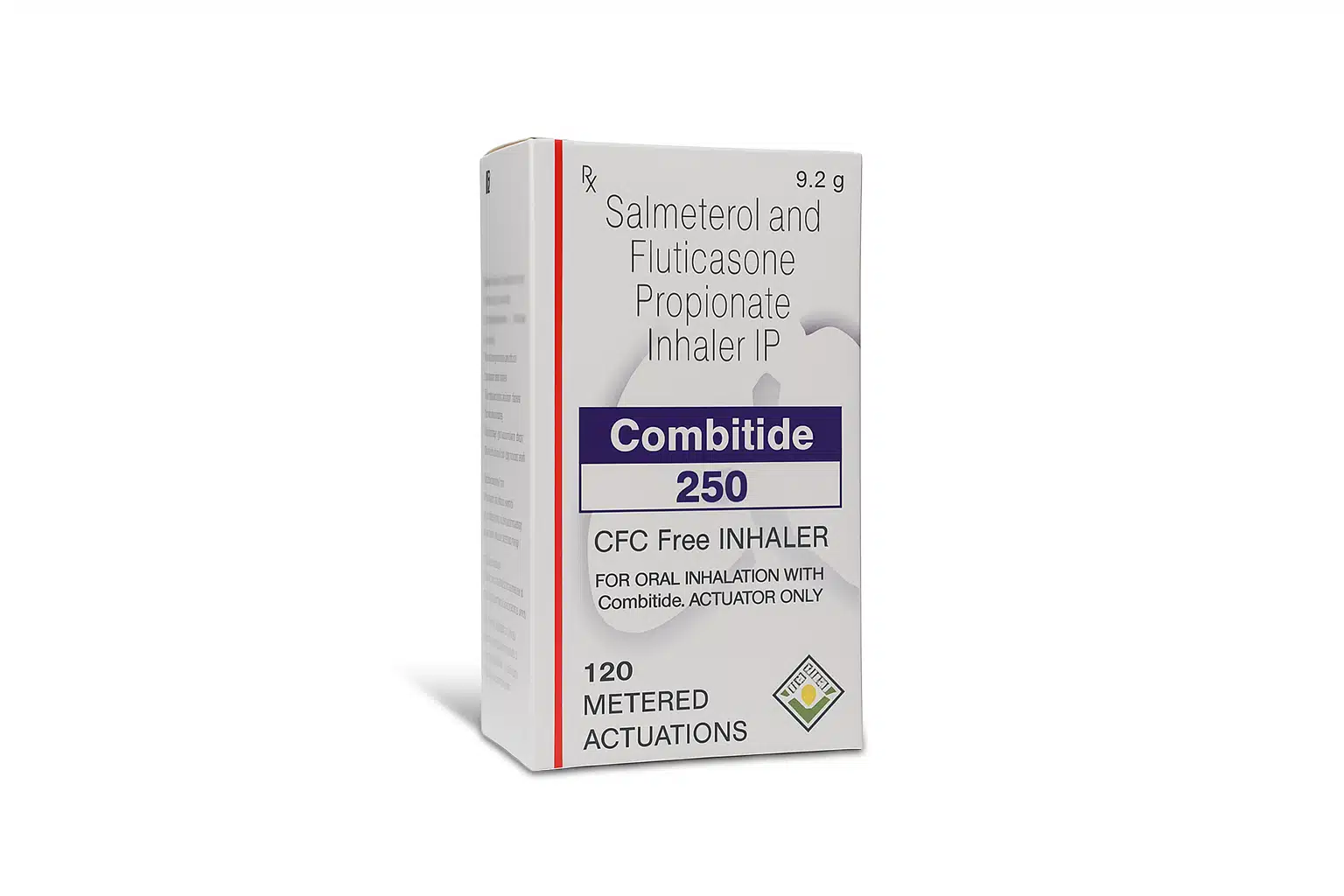
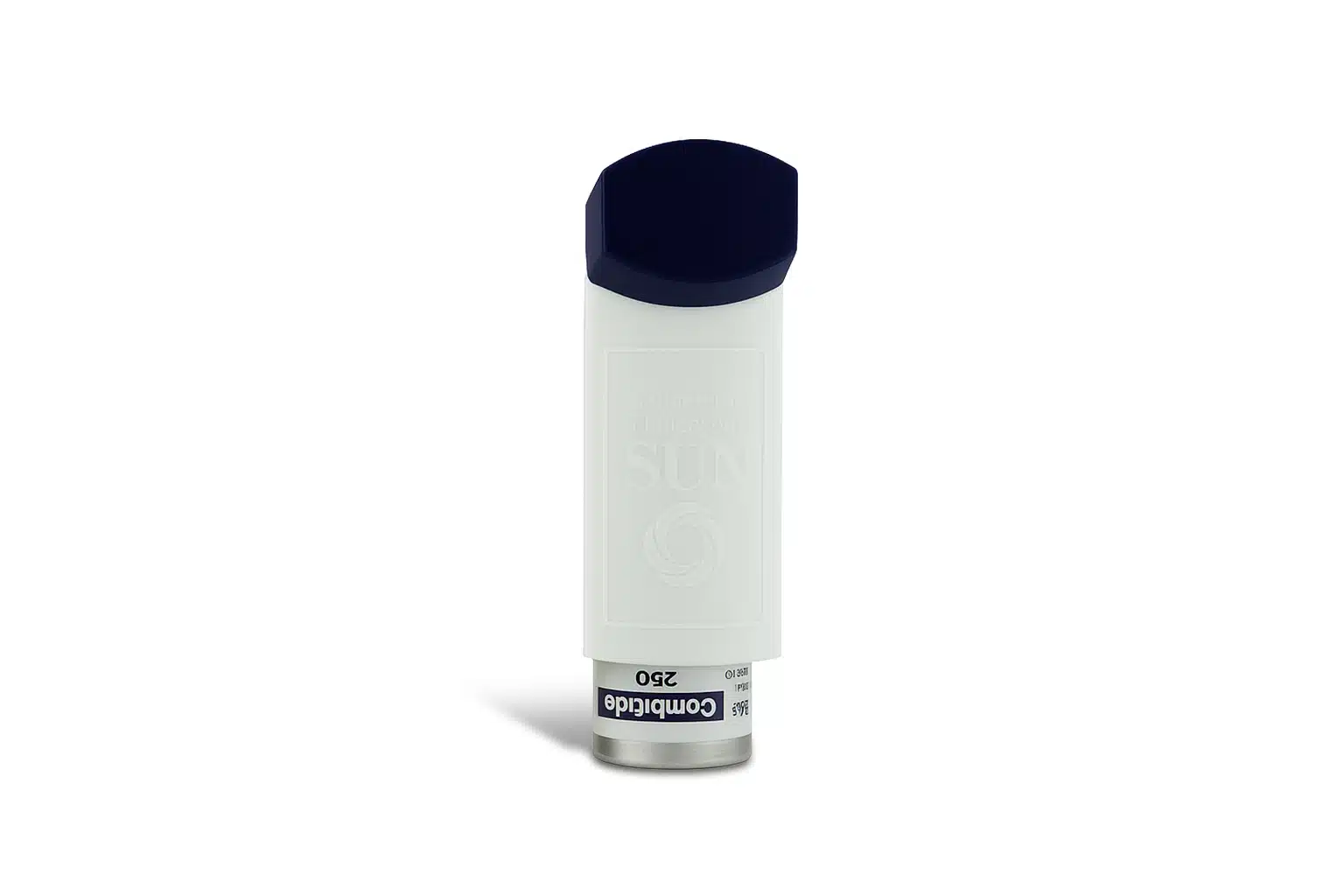
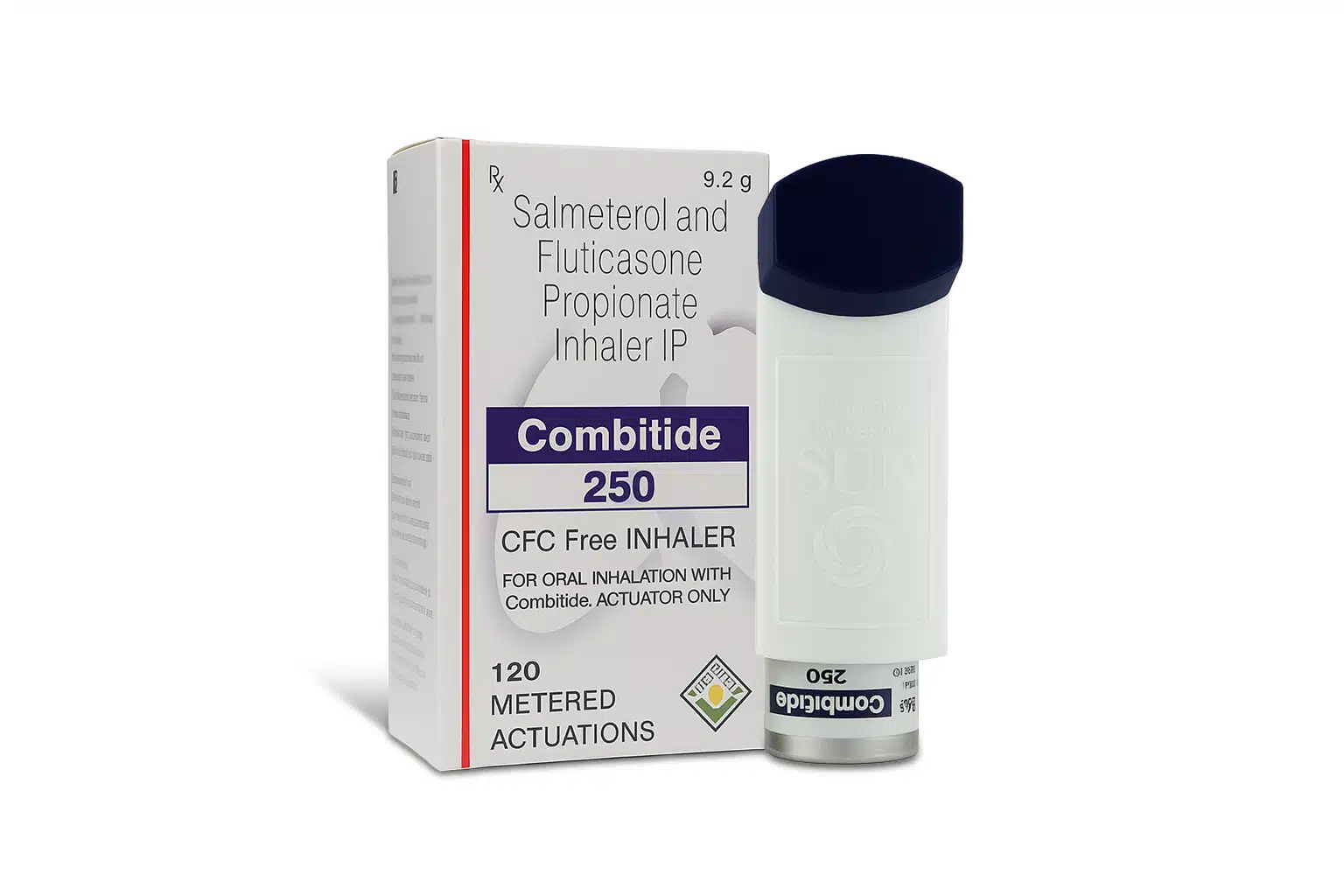
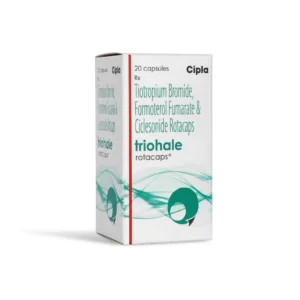

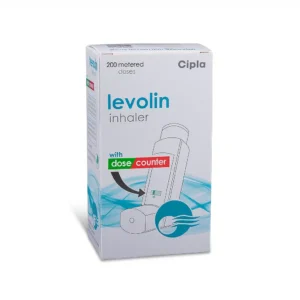
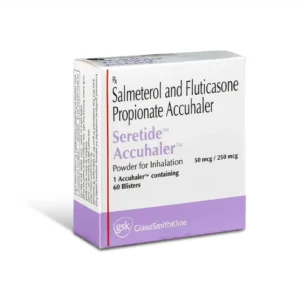
Isabella Robinson –
Works fine, helps me manage asthma daily. Needs rinsing after use
Emily Foster –
Stronger dose, helpful when my asthma was getting worse